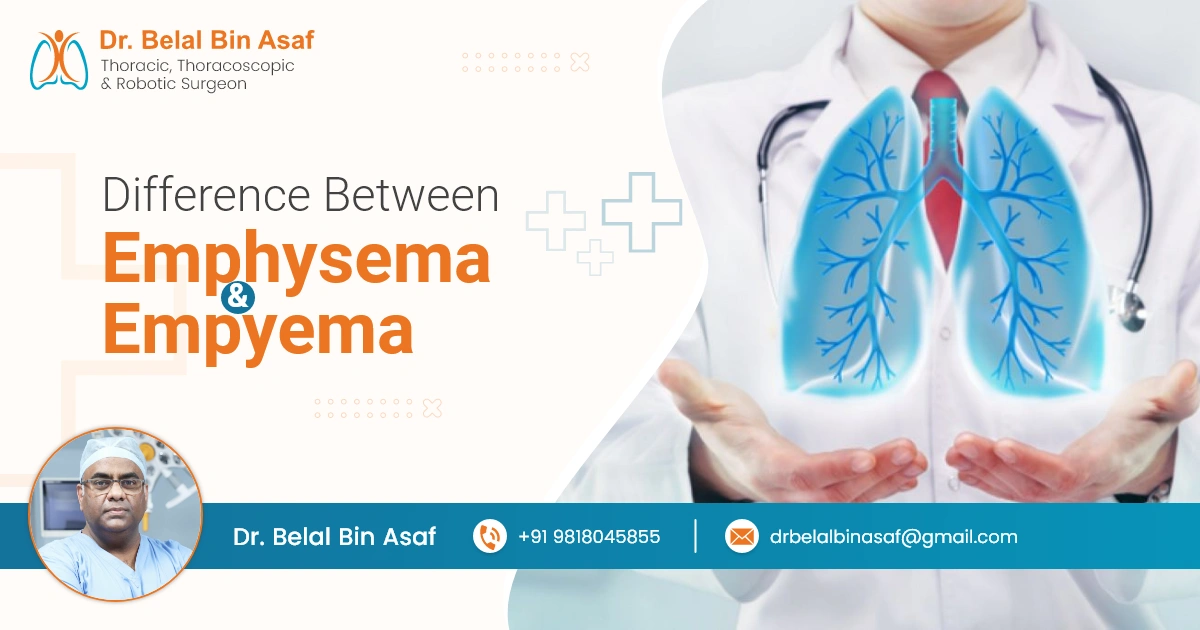Respiratory conditions are varied and can sometimes sound similar, leading to confusion. Two such terms, emphysema and empyema, often come up in conversations about lung health. Although they affect the respiratory system, these conditions are entirely different in their causes, symptoms, and treatments. Understanding the differences between emphysema and empyema is crucial for timely diagnosis and effective treatment.
In this blog, we will explore emphysema and empyema in-depth, highlighting their key differences, symptoms, treatment options, and preventive strategies.
Contents
Key Differences Between Emphysema and Empyema
While both conditions affect the respiratory system, emphysema and empyema differ significantly in their causes, symptoms, and treatments. Here’s a breakdown of their key differences:
| Feature | Emphysema | Empyema |
| Location | Affects the alveoli (air sacs) inside the lungs. | Affects the pleural space (area between lungs and chest wall). |
| Cause | Caused primarily by smoking or long-term exposure to irritants. | Caused by infections (e.g., pneumonia), lung abscess, or trauma. |
| Onset | Gradual and chronic, developing over years. | Acute and often rapid, occurring due to infection. |
| Symptoms | Gradual shortness of breath, wheezing, fatigue. | Sudden onset of fever, chest pain, difficulty breathing. |
| Diagnosis | Pulmonary function tests, chest X-ray, CT scan. | Chest X-ray, CT scan, thoracentesis. |
| Treatment | Long-term management with bronchodilators, corticosteroids, and oxygen therapy. | Immediate treatment with antibiotics, drainage, and possible surgery. |
| Prognosis | Progressive, but manageable with lifestyle changes and treatment. | Often curable with proper treatment, but can lead to complications if untreated. |
What is Emphysema?
Emphysema is a long-term, progressive lung disease that falls under the category of Chronic Obstructive Pulmonary Disease (COPD). It primarily damages the alveoli, which are the tiny air sacs in the lungs responsible for gas exchange. This damage reduces the lungs’ ability to move air in and out, leading to breathing difficulties.













 +91-9818045855
+91-9818045855
